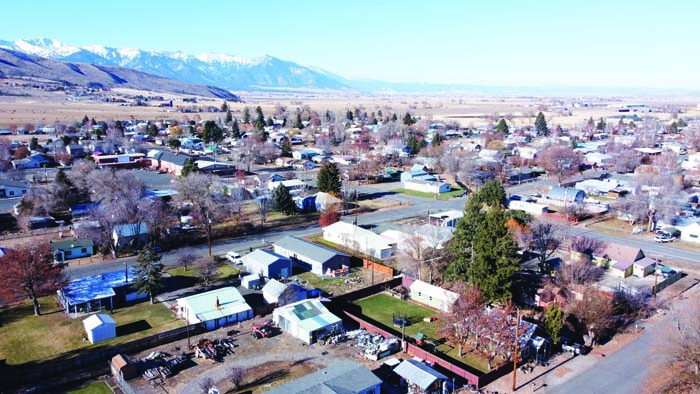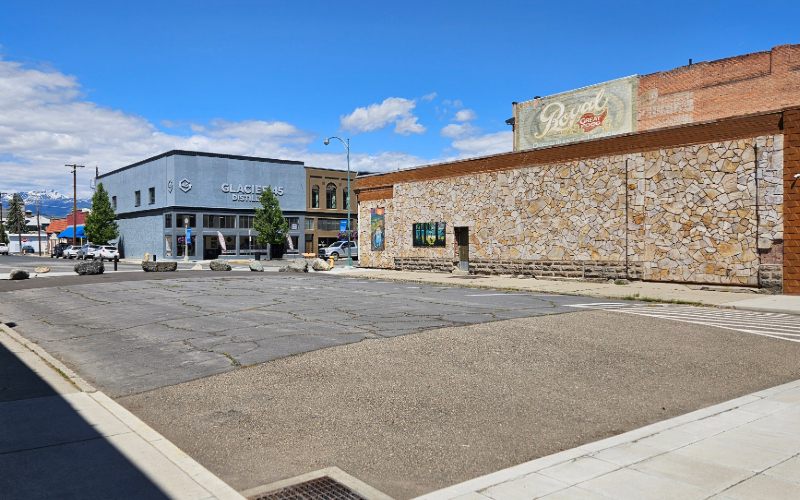Baker City Reaches Population Milestone
Published 3:07 pm Monday, August 16, 2021

- Appraisers from the Baker County Assessor's Office are appraising real market values of residential properties in Baker City. (Jayson Jacoby/Baker City Herald, File)
Baker City has finally surpassed a threshold it had approached, but never quite cleared, over the past century and a half.
The city’s population has topped 10,000.
And that’s according to the ultimate arbiter of such matters, the U.S. Census Bureau.
The federal agency on Thursday, Aug. 12 released city and county populations from the once-a-decade head count conducted in 2020.
The Census pegs Baker City’s population at 10,099. That’s an increase of 271 people — 2.8% — from the 2010 Census figure of 9,828.
Although the Portland State University Population Research Center, which makes annual estimates of city and county populations in the years between the decennial U.S. censuses, has in several years put Baker City above the 10,000 mark, the city had not reached that level in an official U.S. Census.
But Baker City, which was started in 1864 and incorporated in 1874, came awfully close 60 years ago.
Its official population in the 1960 Census was 9,986.
The city didn’t approach that level during the three subsequent national censuses, although its population didn’t drop significantly either.
The figure of 9,140 for the 1990 Census was the city’s lowest since 1930 (7,858).
In the two ensuing head counts, however, Baker City again pushed close to the 10,000 ceiling — 9,860 in 2000 and 9,828 in 2010.
What does it mean?
Besides that additional digit, the city’s jump above 10,000 means Baker City is now considered a “medium-sized” city rather than a small one, said Holly Kerns, director of the Baker City/County Planning Department.
“It triggers a number of new requirements for Baker City that haven’t been in place before,” Kerns said. “Medium-sized cities are required to do an annual report on the housing units that are permitted and produced.”
Baker City is also required to conduct a housing needs analysis every six to eight years, followed by a housing production strategy, Kerns said.
Baker City Mayor Kerry McQuisten said the Census figure wasn’t surprising, considering Portland State had projected the city’s population had surpassed 10,000.
“We were anticipating that this would be the case for several months,” McQuisten said.
Contributing trends
Based on statistics over the past decade, it appears that the city’s population increase over the past decade was driven by people moving to the area.
According to the Oregon Health Authority, Baker County recorded 2,096 deaths and 1,625 births from 2010-19 — a net loss of 471 residents.
Those are county totals, but about 80% of the total births were to residents in the 97814 ZIP code, and about 77% of the deaths. That ZIP code, however, does include parts of Baker Valley and other areas outside the Baker City limits.
Another telling statistic is the number of active utility accounts inside the city.
That number rose by 128 from December 2015 to December 2020, according to the city — from 4,151 to 4,279.
History of population stability
Longtime Baker County historian Gary Dielman, who lives in Baker City, said the city reaching 10,000 population is a “milestone.”
But Dielman, a 1957 Baker High School graduate, said he hopes that milestone doesn’t signify the sort of trend that almost every sizeable Oregon city has experienced over the past few decades.
“Growth is not a good word for me,” Dielman said. “I’ve been very happy that Baker’s population has remained stable.”
Dielman cited Bend as the most notable example in Oregon of the sort of population growth he hopes never happens in Baker City.
Baker City and Bend were of similar size until the 1970s, when the latter city began a growth spurt that accelerated rapidly in the last decade of the 20th century.
In 1930, Bend was only slightly larger than Baker City, with 8,848 residents to Baker City’s 7,858.
Bend’s margin widened over the next few decades but not dramatically — in the 1970 Census Bend’s population had grown to 13,710, while Baker City was home to 9,354 residents.
By 1990 Bend was more than twice as large, with 20,469 residents to Baker City’s 9,140.
During the 1990s, though, Bend’s population more than doubled, reaching 52,029 by the 2000 Census.
Baker City, meanwhile, has had comparatively minor fluctuations in its population over the decades, gaining residents during the 1950s, 1970s and 1990s, but losing residents during the 1960s, 1980s and 2000s. None of those changes, however, was more than 7.9% (an increase from 1990 to 2000).
Neighboring cities along the I-84 corridor, by contrast, have all grown during that period, albeit at rates much below those of Bend.
La Grande, for instance, gained residents every decade from 1950 to 2010, with the largest increase being 17.7% during the 1970s.
La Grande surpassed Baker City during the 1960s, reaching a population of 9,645 in the 1970 Census, to Baker City’s 9,354.
Ontario has added residents in every decade since the 1930s, and Pendleton’s population has grown every decade except the 1960s, when it dropped by 8.6%.
Baker City Population
Baker City’s population has been unusually steady, among Oregon cities with more than 5,000 residents. Most of those cities have grown over the past several decades, at varying rates, but Baker City’s population has stayed between 9,134 and 9,986 since the 1940 Census. The city’s population, at each U.S. Census:
1880 — 1,258
1890 — 2,604
1900 — 6,663
1910 — 6,742
1920 — 7,729
1930 — 7,858
1940 — 9,342
1950 — 9,471
1960 — 9,986
1970 — 9,354
1980 — 9,471
1990 — 9,140
2000 — 9,860
2010 — 9,828
2020 — 10,099





